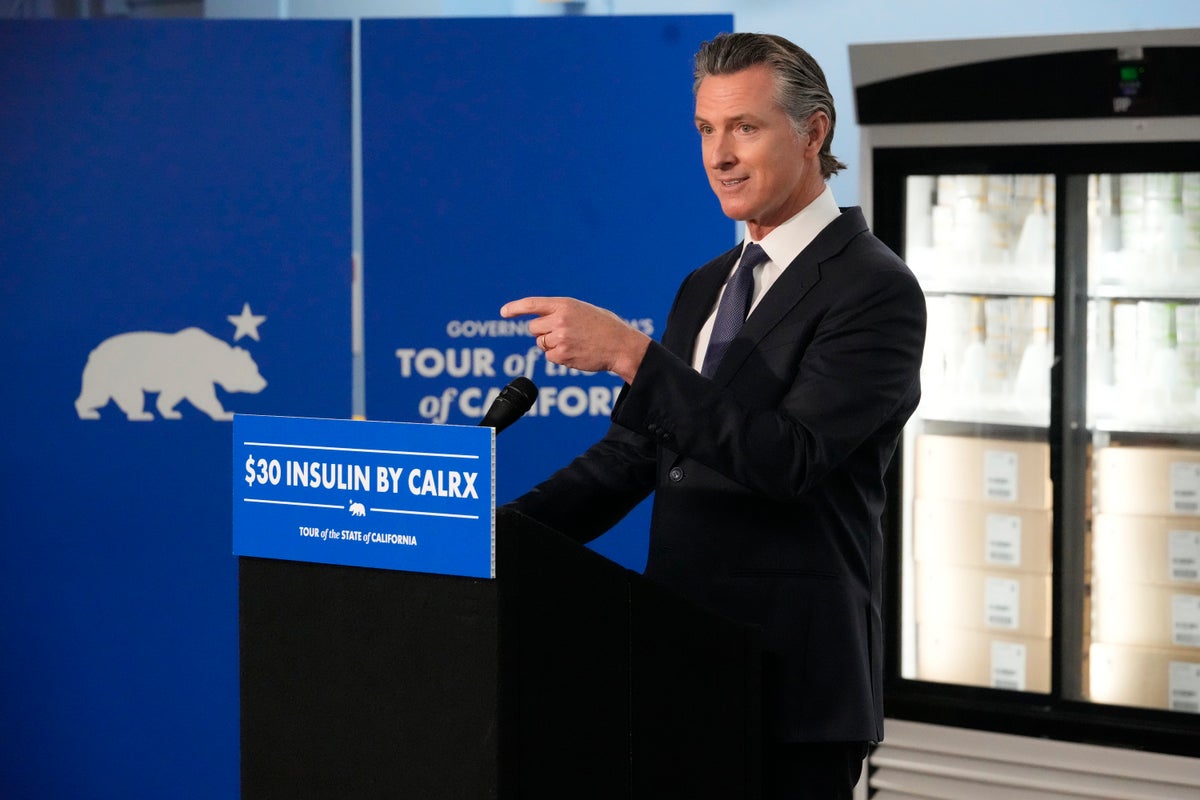
The state of California and a generic drug manufacturer announced a 10-year partnership Saturday to produce affordable, state-branded insulin that they hope will rival longtime producers and push down prices for a medication used by millions of Americans.
The product is not expected on store shelves until at least next year, and it was difficult to predict what effect it would have on a market already shaken by change. Earlier this week another major insulin maker promised steep price cuts as pressure builds on drugmakers and insurers to slash the cost of the drug.
Democratic Gov. Gavin Newsom said he hoped California’s emergence as an insulin-maker would prompt prices to collapse. Research has shown that prices for the drug have more than tripled in the past couple of decades.
“We are intent to make this about market disruption,” Newsom said at a ceremony announcing the pact at a pharmaceutical warehouse near Los Angeles. He called it “a game changer” for 8 million Americans who use insulin to treat diabetes.
Many questions remain. The state and its partner, the nonprofit Civica, have yet to locate a California-based manufacturing facility. Regulatory approvals will be needed. Newsom said a 10- milliliter vial of the state-branded insulin would sell for $30, but it's possible competitors could slash their prices and undercut the state product.
“Is this perfect? We don't know yet,” Newsom acknowledged at one point.
Just days ago, President Joe Biden said his administration is focused “intensely” on lowering health care costs, including pressuring pharmaceutical companies to lower the costs of insulin. Legislation enacted last year capped copayments for insulin at $35 per month for Medicare beneficiaries. Biden has proposed extending that cap to all Americans.
Novo Nordisk said Tuesday that it will slash some of its U.S. insulin prices up to 75% starting next year. The announcement comes less than two weeks after rival Eli Lilly said it will drop some of its prices by 70% or more later this year.
Anthony Wright, executive director of Health Access California, a statewide consumer health care advocacy group, welcomed Newsom's announcement, saying efforts by California and others to develop a competing generic are likely a factor in getting insulin manufacturers to cut their prices.
Still, there are obstacles.
“The work to develop a generic, get FDA approval and set up manufacturing will take real time,” Wright said in an email. “There may even be more time in the effort to get doctors to prescribe the drug, insurers and (pharmacy benefit managers) to include it on their formularies and patients and the public to accept and ask for it.”
There could be other risks. State analysts have warned that California's entry into the market could prompt other manufacturers to reduce the availability of their drugs, a potential unintended consequence.
State lawmakers approved $100 million for the project last year, with $50 million dedicated to developing three types of insulin and the rest set aside to invest in a manufacturing facility.
Even with the challenges of entering a competitive, established market, Newsom said taxpayers would have “very ample protections.”
If for whatever reason the deal didn't work out to the state's benefit, “there’s all kinds of provisions that would allow us to ... pull out,” he said.
According to state documents, the proposed program could save many patients between $2,000 and $4,000 a year. In addition, lower costs could result in substantial savings because the state buys the product every year for the millions of people on its publicly funded health plans.
The state also is exploring the possibility of bringing other drugs to market, including the overdose medication Naloxone. The drug, available as a nasal spray and in an injectable form, is considered a key tool in the battle against a nationwide overdose crisis.
“We are not stopping here,” Newsom said.







